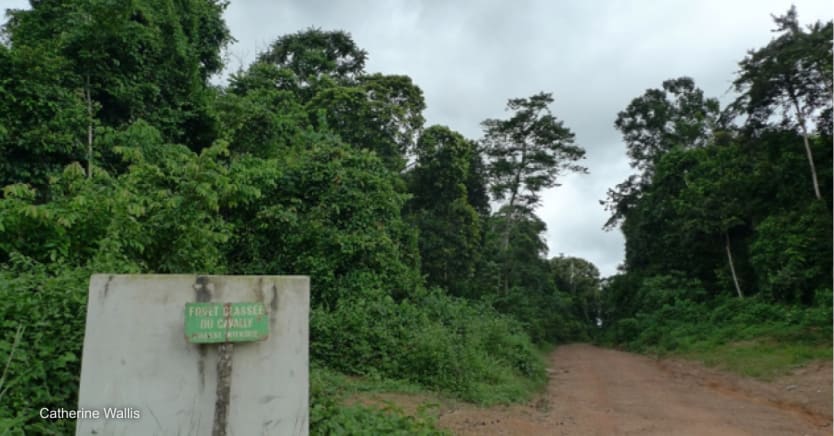
Human development has long been underpinned by a stable climate and ecosystems, but we now find ourselves in the midst of simultaneous biodiversity and climate change crises.
There is growing recognition that biodiversity loss and the climate crisis need to be tackled in tandem. Both are a result of human activity. Both are fundamentally connected. Feedback loops that are accelerating climate change are also causing disruption to ecosystems — leading to stresses, loss of function and a decline in species abundance. Instability in ecosystems sees important carbon sinks being degraded, and stable carbon stores being released to the atmosphere.
Only by addressing biodiversity loss and climate change can we create a sustainable and habitable future.
—Without urgent action to address these crises, we are likely to reach tipping points in multiple locations. That scenario would see significant, and in some cases irreversible, damage to the functioning of these systems — resulting in losses to both biodiversity and the livelihoods that depend on them.
We need to transition the governance of our natural resources into mechanisms that are biodiversity net positive by using a range of integrated conservation and restoration responses, while still generating economic value.
A need for more locally driven solutions
Historically, many biodiversity programs have been designed through centralized processes — often led by external experts — along with decisions on where and how funding is allocated. The same goes for top-down decisions around what areas are protected, which regularly fail to capture the complexities of people’s relationships. Insufficient attention is given to the role local communities, local businesses, and local stakeholders should play when it comes to the management of their landscape.
Gabon plans to become a green superpower by harnessing its rainforest
To preserve its biodiversity, Gabon aims to partner with NGOs that work in the technical aspects of conservation, the country's environment minister tells Devex.
Sometimes this can lead to situations at odds with good stewardship of resources. One such example is Côte d’Ivoire’s forested areas in the southwest, a biodiverse rainforest home to many endemic and endangered species, including chimpanzees. The forest also provides vital ecosystem services that sustain livelihoods and agriculture in the region.
Significant deforestation and land degradation in forest reserves around Tai National Park has taken place because of population growth and land conversion for cocoa, rubber, and palm oil. Understanding these external drivers is key to sustainable land management and biodiversity conservation.
Integrated approaches are needed to protect biodiversity, restore nature, and increase climate resilience, while simultaneously supporting livelihoods.
Integrated approaches at the ground level

Political economic analyses are a core tenet of “doing development differently” that recognizes development as an inherently political process involving uncertainty and constant change. It supports projects to adapt to and work within the grain of political realities, responding to the local environment, and incorporating flexibility and adaptation into project design and implementation. PEAs were originally created to inform good governance programs, but are now gaining traction in other areas, such as biodiversity and sustainable land management.
The challenges to be addressed in nature conservation are both political and technical. We know that PEAs combined with technical assessments, or so-called PETAs, offer a more informed and better-balanced approach to designing programmes than less integrated methods. This is a question of tackling biodiversity and climate issues together in a wider context, grounded at the local level.
We see an opportunity for a cohesive, bottom-up approach using PEAs and PETAs, leveraging the principle that programming is most successful if designed around the local context — beyond silos — to identify and adopt realistic, feasible change pathways based on the drivers of change.
Understanding interests and incentives is particularly important in areas of rich biodiversity, where concerted change is needed for long-term sustainability. PEAs examine the competing factors that drive or block changes in policies or practices and are therefore critical to gaining a deeper understanding of the underlying contextual factors — structures, formal and informal institutions, stakeholders’ interests, and human agency — that generate a better understanding of effective, nature-positive solutions.
Making local action viable and integrated
Getting sustainable financing to local communities is difficult. Nonetheless, decentralization and devolved climate finance mechanisms to local jurisdictions — as piloted in East Africa — show promising results. We must place local people at the centre of the discussion, program design and funding models, but also promote accountability in order to bring about greater local ownership.
Another challenge is to ensure financial commitments to support local communities in low- and middle-income countries are planned over a longer term rather than the typical project-based timeframes of two to five years. Nature positive outcomes, such as soil fertility gains, can take decades to materialize. New public and private alliances and coalitions are needed to channel finance, over longer planning cycles.
Nonetheless, only by addressing biodiversity loss and climate change can we create a sustainable and habitable future. Taking a bottom-up approach is critical to doing so. The mantra around global problems being addressed through local solutions is not new. The difference now is that integrated, locally driven responses are becoming more mainstream and accepted wisdom.
The recent International Union for Conservation of Nature World Conservation Congress, which saw the attendance of an unprecedented number of senior business leaders, and witnessed a multitude of calls by global CEOs to seek out nature-positive models and approaches. The next step is to allow such calls to filter down to local landscapes and communities. The PETA approach provides a useful, structured tool to ensure that the process is locally owned, grounded, and relevant.
Resilient ecological systems are genetically and biologically diverse and are made of a patchwork of multiple heterogeneous landscapes. In the same vein, our social systems too need to value diversity — harnessing local knowledge and traditions around nature and land use. By valuing local experience, creating flexibility in problem solving and balancing power among interest groups, we become a more resilient global community and planet. This will be a long-term engagement, with longer term financing mechanisms required, and with local people in the driver’s seat.










